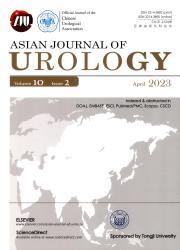影响激光碎石热效应的因素--文献综述
IF 2.4
3区 医学
Q2 UROLOGY & NEPHROLOGY
引用次数: 0
摘要
目的利用激光治疗泌尿外科结石和前列腺疾病已成为泌尿外科治疗的重要组成部分。多年来,激光在碎石术中的热效应一直是一个争论的话题。这篇综述的目的是评估激光在碎石术中热效应的现有知识状况,并探索任何需要研究的新领域。方法于2022年8月在谷歌Scholar、PubMed和Scopus检索包含“热效应”、“激光”、“碎石术”和“泌尿学”等关键词的所有论文,并跳转到与该主题相关的其他研究,共纳入35篇相关论文。根据研究因素和研究类型,将相关论文的数据分为五组,并制作表格进行数据比较。结果只有在功率为40 W且灌溉充足(至少15 ~ 30 mL/min)的情况下,温度才能达到43℃以上的阈值。较短的激光时间除以碎石时间或操作员占空比小于70%也导致较小的温升。结论至少有8个因素可以改变激光的热效应,最重要的是,在较高的灌注率、较低的40 W功率设置和较短的操作员占空比下使用冷冻灌洗有助于防止热损伤的发生。在输尿管或肾盂输尿管交界处的结石进一步增加激光射击时热损伤的可能性。本文章由计算机程序翻译,如有差异,请以英文原文为准。
Factors affecting the thermal effects of lasers in lithotripsy: A literature review
Objective
The use of lasers has been an important part of urology in the treatment of stone and prostate disease. The thermal effects of lasers in lithotripsy have been a subject of debate over the years. The objective of this review was to assess the current state of knowledge available on the thermal effects of lasers in lithotripsy, as well as explore any new areas where studies are needed.
Methods
In August 2022, a keyword search on Google Scholar, PubMed, and Scopus for all papers containing the phrases “thermal effects” AND “laser” AND “lithotripsy” AND “urology” was done followed by citation jumping to other studies pertaining to the topic and 35 relevant papers were included in our study. The data from relevant papers were segregated into five groups according to the factor studied and type of study, and tables were created for a comparison of data.
Results
Temperature above the threshold of 43 °C was reached only when the power was >40 W and when there was adequate irrigation (at least 15–30 mL/min). Shorter lasing time divided by lithotripsy time or operator duty cycles less than 70% also resulted in a smaller temperature rise.
Conclusion
At least eight factors modify the thermal effects of lasers, and most importantly, the use of chilled irrigation at higher perfusion rates, lower power settings of <40 W, and with a shorter operator duty cycle will help to prevent thermal injuries from occurring. Stones impacted in the ureter or pelvi-ureteric junction further increase the probability of thermal injuries during laser firing.
求助全文
通过发布文献求助,成功后即可免费获取论文全文。
去求助
来源期刊

Asian Journal of Urology
UROLOGY & NEPHROLOGY-
CiteScore
4.00
自引率
3.80%
发文量
100
审稿时长
4 weeks
期刊介绍:
Asian Journal of Urology (AJUR), launched in October 2014, is an international peer-reviewed Open Access journal jointly founded by Shanghai Association for Science and Technology (SAST) and Second Military Medical University (SMMU). AJUR aims to build a communication platform for international researchers to effectively share scholarly achievements. It focuses on all specialties of urology both scientifically and clinically, with article types widely covering editorials, opinions, perspectives, reviews and mini-reviews, original articles, cases reports, rapid communications, and letters, etc. Fields of particular interest to the journal including, but not limited to: • Surgical oncology • Endourology • Calculi • Female urology • Erectile dysfunction • Infertility • Pediatric urology • Renal transplantation • Reconstructive surgery • Radiology • Pathology • Neurourology.
 求助内容:
求助内容: 应助结果提醒方式:
应助结果提醒方式:


